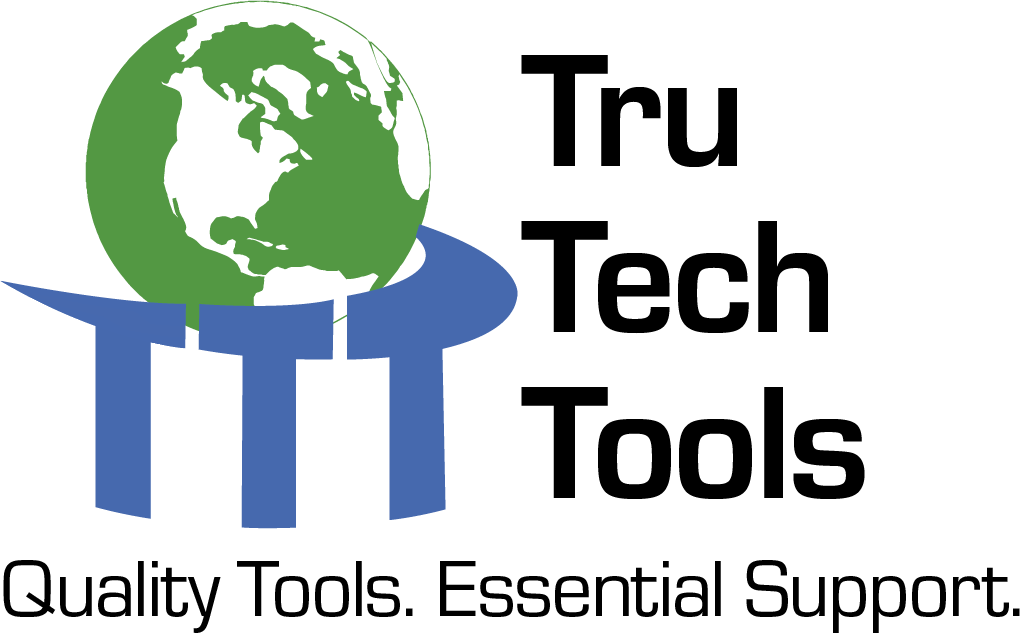Get Tech Tips
Subscribe to free tech tips.
Preventing Heat Illnesses in the BLAZING Summer Heat
This tech tip about preventing heat illnesses covers information and resources from the Cleveland Clinic, the U.S. Centers for Disease Control and Prevention (CDC), the U.S. Occupational Safety and Health Administration (OSHA), and the National Oceanic and Atmospheric Administration (NOAA). HVAC School is NOT an official OSHA training resource, and although these safety tips are shared in good faith, they are not a substitute for OSHA training.
We just went through a heat wave from coast to coast, and it only seems to get hotter each year. Service calls don’t stop for heat waves, and hauling ourselves into scorching attics and working outside with the sun beating down is just another day at work for an HVAC technician in the middle of summer. However, working in the heat is not something we should all try to “tough out” and push through.
You may have heard the tragic news about the Arizona-based HVAC technician who lost his life while working in a 150°F attic at the beginning of July. It’s a sobering reminder of the risks we face each time we go to a job in hot weather—and that no job is worth another human’s life.
Working in extreme heat is an unavoidable part of the trade, and we must assess and mitigate the risks that come with it. Heat illnesses come in multiple forms, all of which can be prevented, and some of which require immediate medical attention. Let's learn the differences between them and the science behind heat illness prevention.
Heat Illnesses
You may have heard a few different terms for heat illnesses, such as heat exhaustion and heat stroke. Each illness has its own level of seriousness.
Heat Rash
When you sweat too much in areas with a lot of friction (from skin or clothes), you could get a spotty rash. This is called heat rash, and it’s common in sweaty areas with a lot of friction, including elbows, knees, the chest, underarms, and the groin (not to be confused with the red, bumpy rash you get from fiberglass insulation on your skin). I know you probably didn’t think HVAC School was ever going to cover rashes, yet here we are.
While heat rashes are unpleasant, they don’t require immediate medical attention if they’re the only heat-related symptom. Anyone who experiences a heat rash should be mindful of any further symptoms and do what they can to stay dry, such as by using body powder (AKA baby powder—yes, adults can use it too), but that’s all. There’s no need for someone to call for medical attention because of a rash in the pit of their elbow, although your new apprentice might think so.
Heat Cramps
When your body loses water through sweating, it also loses salts and essential fluids it needs for your muscles to contract. When those fluids and salts are lost, your muscles can cramp or spasm, and it can be painful. If you’ve ever been unable to let go of pliers in your hand, no matter how hard you try, you may have been experiencing a heat cramp. These cramps can be especially dangerous if you are climbing a ladder, roping something down, or holding yourself in a tight spot in an attic.
While heat cramps often aren’t deadly, they need to be handled with care due to the above-mentioned situations that could lead to an even more serious accident. It may be tempting to reach for salt tablets, but that is one of the worst things we could do. Salt draws water out of the blood vessels and into the digestive system, so salt tablets could cause further dehydration. Instead, focus on drinking water or electrolyte-replenishing drinks (avoiding ones that are high in sugar). You can get great natural hydration from coconut water, Pedialyte (both powder and liquid), and electrolyte-infused water.
The foods we eat also have a lot of the minerals and electrolytes we are looking to replace, so eating right plays a huge part in our hydration as well. We are looking to replenish sodium, calcium, potassium, and magnesium, so look for these ingredients in foods and drinks when planning out your day. Pickles, for example, are rich in sodium, potassium, and magnesium.
Medical intervention may be necessary if the cramps don’t improve or if the person suffering from heat cramps has a heart condition. However, most of the time, rehydration and rest will suffice. So, take a break and drink some water, Pedialyte, or pickle juice if you’re into that kind of thing (I don’t judge… mostly).
Heat Exhaustion
Now we’re getting into the real danger zone. Heat exhaustion occurs when you sweat too much (yes, we all know that technician who brings 4 shirts to work), losing vital water and salts, and your body can’t cool itself down effectively. Your body temperature, heart rate, and breathing will increase.
The cause is the same as heat cramps, and heat cramps may be a symptom of heat exhaustion, so keep an eye out and be ready to call for help if your partner keeps cramping up. Heat exhaustion will come with other, more severe symptoms, including:
- Heavy sweating
- Cold, clammy skin
- Fatigue
- Dizziness
- Nausea
- Fast heart rate with a weak, fluttering pulse
- Rapid breathing (hyperventilation)
- Elevated body temperature
Even if you have an elevated body temperature, it will typically stay below 104°F if you have heat exhaustion. Heat stroke is associated with even higher body temperatures. Nonetheless, you should still seek medical attention if you have heat exhaustion, as it can progress to life-threatening heat stroke.
Call your local emergency services if you or a colleague begins showing the symptoms above. Here’s what you should do while you wait for EMS to arrive:
- Move to a shaded or cooler area
- Loosen or remove excess clothing (e.g., an overshirt)
- Lie down with legs elevated
- Cool your body with fans, wet towels, or other cooling methods
- Slowly sip water
Heat Stroke
Heat exhaustion progresses to heat stroke when your body overheats to dangerous levels and can’t cool itself back down. Your body temperature will exceed 104°F, and you will likely experience neurological symptoms.
There are two types of heat stroke: exertional and non-exertional. Most HVAC professionals will have to worry about exertional heat stroke, which occurs when you perform physical activity in high heat (or sometimes normal temperatures). Non-exertional heat stroke is related to temperature only, like sitting in a hot car or attic, and is more common in vulnerable groups, such as children and the elderly.
Exertional heat stroke has a lot of the same symptoms as heat exhaustion (except for an even higher body temperature), but its symptoms ALSO include:
- Behavioral changes (such as aggression or agitation)
- Blurred vision
- Confusion
- Fainting
- Low blood pressure
- Seizures
- Slurred speech
- Flushed or paler-than-usual skin
Heat stroke requires immediate medical attention—calling 911. However, because confusion and behavioral changes can interfere with a person’s judgment, a person who is suffering from heat stroke probably won’t be able to call for help themselves. That’s why it’s important to be educated about heat-related illnesses and their symptoms—not just to save yourself but to save the life of a teammate. This is why we should always have someone working with us in extreme weather conditions.
Unlike with heat exhaustion, NEVER offer water to someone who is suffering from heat stroke. With the neurological symptoms, the person might inhale the water instead of swallowing it, which could cause more complications. It may also be tempting to offer a fever reducer; these are unlikely to help and could potentially worsen the situation by straining the already stressed kidneys.
How Hot is Too Hot?
Working in dangerously hot conditions is a fact of life for HVAC/R technicians in the summer. However, it still pays to know when conditions are dangerous so that we can adjust our habits to keep ourselves and teammates safe; the heat takes no prisoners and shows no mercy.
Heat Index
Time for the science I promised! Heat isn’t the only factor that matters; humidity, solar radiation, and air movement also matter. Many people are aware of the heat index, which is how the temperature feels to your body, not the actual temperature. (You may see the heat index labeled as “RealFeel” or “Feels like” in your weather app.) Humidity makes it seem hotter outside because your body can’t evaporate sweat and cool you as efficiently as in dry weather.
The danger zone will depend on your physical condition and what you’re doing, but as a general rule, here are the risk categories per NOAA’s National Weather Service (NWS) (assuming prolonged exposure and physical activity):
- Caution: 80– 90°F (fatigue possible)
- Extreme caution: 90–103°F (heat cramps, exhaustion, and stroke possible)
- Danger: 103–124°F (heat cramps and exhaustion likely, heat stroke possible)
- Extreme danger: 125°F+ (heat stroke likely)
We can determine our risk using the chart below. For example, 90°F outside at 80% humidity feels like 113°F. Then we take that number and look at the color on the chart or compare it to the categories above to see how dangerous it is.

Source: National Oceanic and Atmospheric Administration (NOAA)/National Weather Service (NWS), https://www.noaa.gov/jetstream/synoptic/heat-index
Now, here’s the mindblowing part: the chart above is actually the measurement of the heat index in the SHADE. According to the NWS, we need to add 15°F to our index if working in direct sunlight. That takes our 113°F example up to 128°F!
Wet Bulb Globe Temperature (WBGT)
There is another temperature reading that accounts for solar radiation and air movement in addition to heat and humidity: the wet bulb globe temperature (WBGT). A WBGT tool contains three instruments to measure all of those factors:
- Dry-bulb thermometer for temperature
- Wet-bulb thermometer for humidity
- Black globe for solar radiation and air movement
Dry-bulb temperature is extremely straightforward—sensible heat, no adjustments for humidity. Traditional wet-bulb thermometers quite literally have a wet cloth over them, and they measure the cooling that happens when that water evaporates. Again, in humid conditions, the water does not evaporate efficiently; this represents how difficult it is for sweat to evaporate from our skin and cool us down (and why the heat index is higher than the actual temperature when the humidity is high). A black globe heats up when it absorbs the sun’s radiation and cools down when the wind blows over it; it measures how intensely the sun beats down on us and the effects of air movement. You can buy portable WBGT meters so that you always have real-time data, or you could use NOAA’s resources.
If you live in the United States or one of its territories, the NWS issues regional WBGT forecasts up to a week in advance at https://digital.weather.gov/. There is a drop-down that lets you choose “Wet Bulb Globe Temperature (°F),” and you can zoom in on your location and see the WBGT and associated risk. Here is one from August 7th (the day the screenshot was taken) at 2 PM:

Source: National Oceanic and Atmospheric Administration (NOAA)/National Weather Service (NWS), https://digital.weather.gov/
You can use the slider bar at the top right to see the forecast for the next seven days. Here is a screenshot of the forecast for August 13th at 2 PM (also taken on August 7th, as you can see at the bottom):

Source: National Oceanic and Atmospheric Administration (NOAA)/National Weather Service (NWS), https://digital.weather.gov/
If some non-urgent but strenuous jobs can wait, try to take advantage of the forecast and schedule those jobs for less brutal days (or earlier or later in the day). At Kalos, we try to schedule duct and IAQ upgrades in the shoulder seasons when the heat is less dangerous. But as many of us across the continent know, strenuous work in hot weather is sometimes unavoidable. When that’s the case, we need to adjust to the conditions to prevent heat illnesses.
How to Prevent Heat Illnesses in Unavoidable Heat
While working in dangerous heat is far from ideal, it’s often unavoidable—it’s just part of the job in the summer. At that point, all we can do is prepare and take care of ourselves.
Acclimatize
Someone who hasn't spent a lot of time in intense heat will be more prone to heat illness than someone who has. In our world, those people are usually apprentices, techs who have just returned after an extended break (due to injuries, parental or FMLA leave, etc.), and techs who have recently relocated to a warmer climate from a cooler one. The CDC defines acclimatization as the gradual process of exposing workers to heat so that their bodies can learn how to:
- Sweat efficiently
- Circulate blood efficiently
- Develop a lower core temperature and heart rate during work
To acclimatize someone, they should be exposed to no more than 20% of their expected workload in the heat on day one. Each day, they should increase the exposure a bit, though by no more than 20% (e.g., Day 1 = 20%, Day 2 = 40%, Day 3 = 60%). This entire process should take 1–2 weeks, so don’t toss your apprentice in a 130°F attic all day on day one.
Hydrate—The Right Way
You’ve probably heard it a thousand times by now: hydrate, hydrate, hydrate. But there are right and wrong ways to go about this.
First, you should drink water or electrolyte drinks meant to replenish lost electrolytes. Avoid sugary, caffeinated, or alcoholic drinks. Caffeine and alcohol are diuretics, meaning they exacerbate fluid loss via increased urine production. We want our bodies to retain those fluids so that we can sweat and cool ourselves down, so put down that Monster Energy drink. Alcohol also makes it harder for your body to regulate temperature (shocker, I know).
Second, take frequent, slow drinks, even when you’re not thirsty. If you feel thirsty, you’re already behind the hydration 8-ball. One cup (8 fl oz) of water every 15–20 minutes is ideal for hydration. Fast gulps at infrequent, irregular intervals are less effective.
It’s also possible to drink too much water. Drinking too much water can dilute the concentration of salts in your blood to a dangerously low level. So, drink water often, but stay under 1.5 quarts (48 fl oz) per hour. Drink too much, and you could experience nausea, cramps, and swelling on the mild side and seizures, confusion, and even death in severe cases.
Dress to Stay Cool
Our clothing choices can also help our bodies stay cool, even in humid attics or when the sun’s beating down on us outside. If you’re working on a condenser or rooftop outdoors, wear a brimmed hat to protect your face from the sun’s UV rays. Light-colored clothing also helps reflect sunlight, whereas darker colors absorb sunlight and heat your body (sure, black hides oil and dirt, but priorities…). Wet rags on the neck help regulate body temperature and are a great way to cool off in a pinch—keep some in your cooler.


Lightweight clothing also helps prevent heat rash. When clothing sticks to your skin, there’s more friction, less airflow, and less room for sweat to evaporate. Tight clothing that sticks to your body may cause unpleasant localized heat rashes, but it also makes it harder for your body to cool down in general and can contribute to heat exhaustion.
While it’s not clothing, sunscreen is also worth a mention. If you’re working outside, wear sunscreen and apply (and reapply) it according to the directions on the packaging to prevent the negative effects of prolonged UV exposure on your skin. There is nothing worse than getting into a hot attic sporting a sunburn from the day before. The same goes for wearing appropriate sunglasses to protect your eyes from solar radiation.
Look Out for Each Other
As cheesy as it sounds, we’re all in this together. Always try to work with a partner, or if you're a business owner or manager, make sure dispatch knows to send at least two people per call if there's a major repair or install—create a buddy system. (This reminds me of the classic scene in Heavyweights…)

We’re tasked with the same dangerous but essential job of making sure our customers stay cool and safe in the summer. We owe ourselves and our teammates the same, and we can do it by:
- Reminding each other to drink water
- Checking in with each other a few times every hour
- Encouraging your employees or teammates to take breaks when you see them struggling or slowing down
- Asking teammates if they need help when they’re in distress (or making that call yourself if they seem out of it)
Yes, reminding your install partner to drink water every 20 minutes might seem annoying (and it’s probably even more annoying to them). But if they collapse on the job site and need to be taken to the hospital, you both would’ve wished that reminder had been given.
Our line of work has many hazards, and heat exposure is one of them. However, like most hazards, its risks can be mitigated with proper attention to safety. Acclimating to hot conditions, staying hydrated, wearing light clothes, and looking out for each other will keep us safe.
If you’re alone, it may be harder, but it’s not impossible to stay safe. Set a timer to drink water every 20 minutes if you need to. Pay close attention to your body, and remember: if you feel thirsty, you’re already dehydrated—that’s your cue to take a drink break immediately. No job or customer’s opinion is worth your life. This summer is brutal, and it only seems to get hotter year after year! Take what you learn here and share it with those you work with; you never know whose life you might save.











Comments
To leave a comment, you need to log in.
Log In